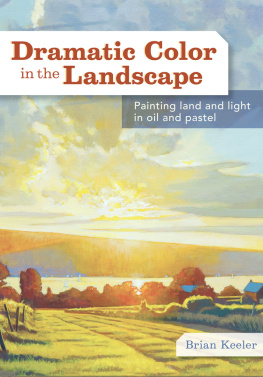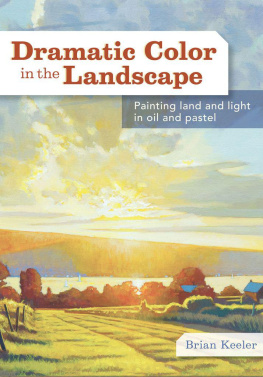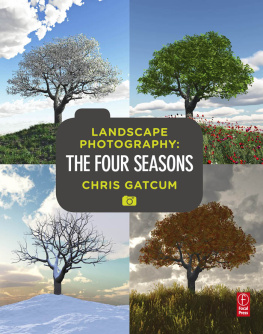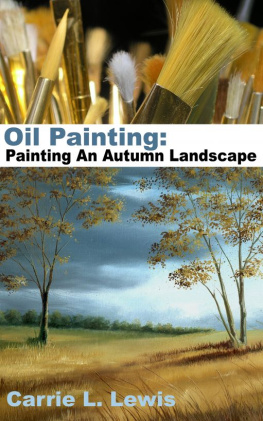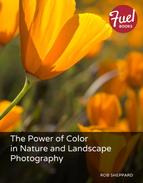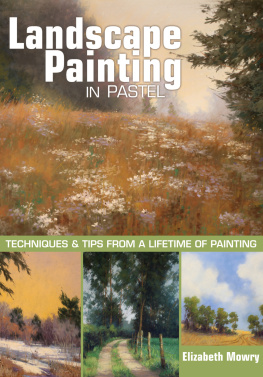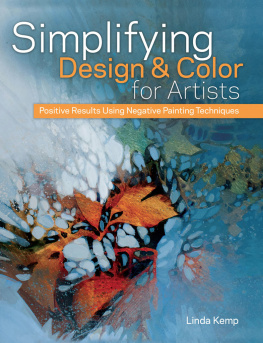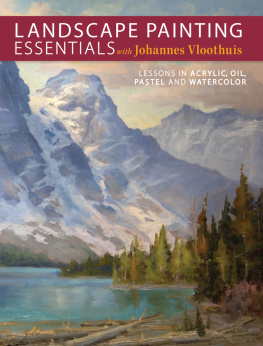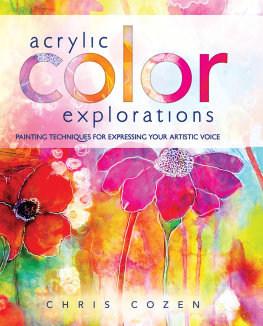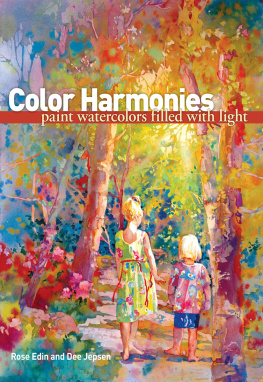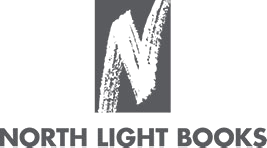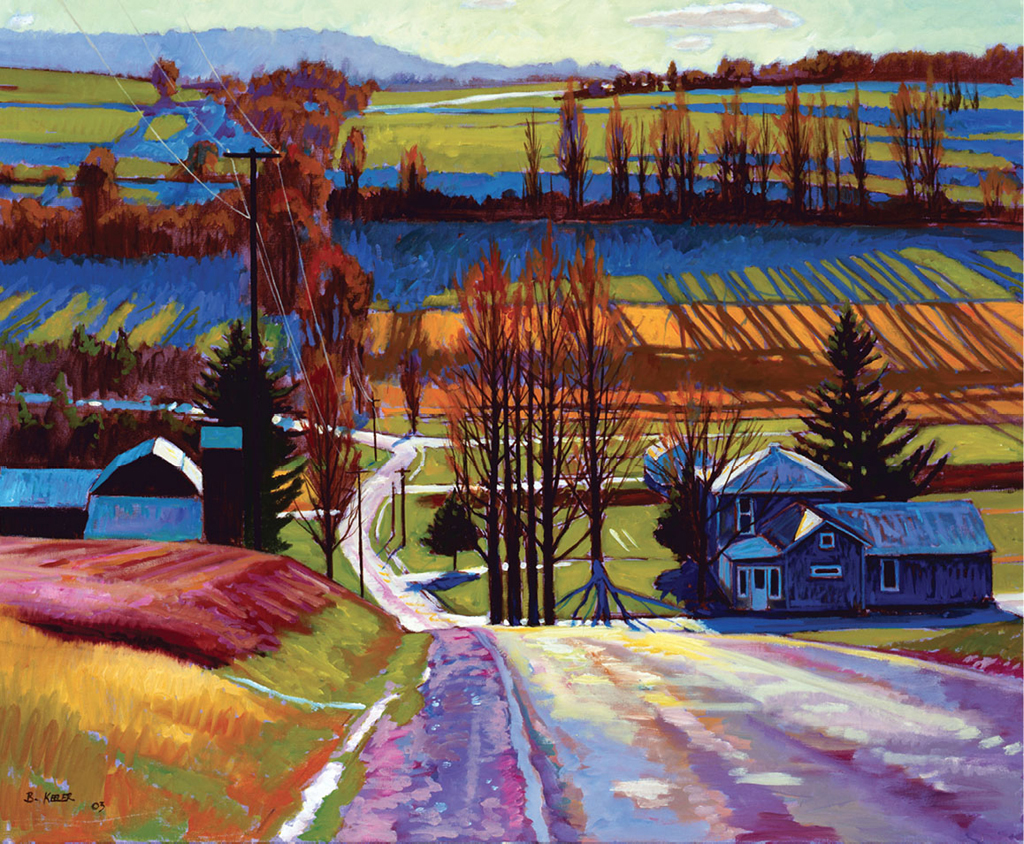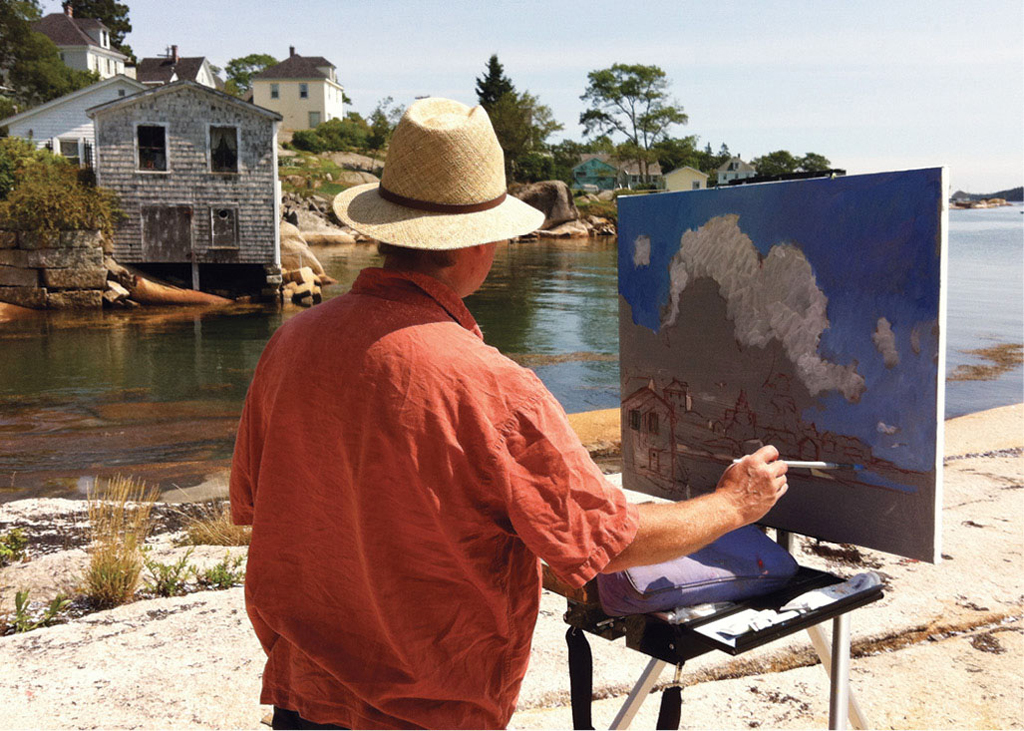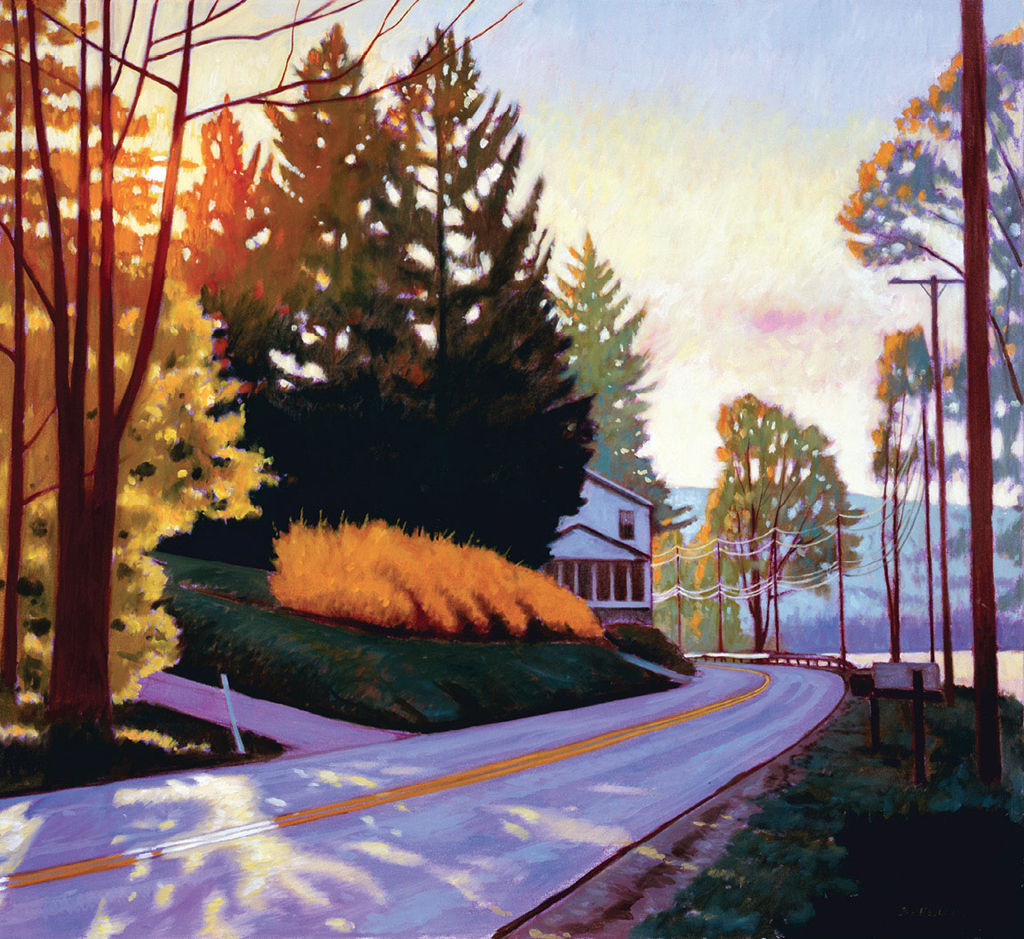Thank you for purchasing this Artist Network eBook.
Sign up for our newsletter and receive special offers, access to free content, and information on the latest new releases and must-have art resources! Plus, receive a coupon code to use on your first purchase from NorthLightShop.com for signing up.
or visit us online to sign up at
http://artistsnetwork.com/ebook-promo
Contents
Supplies You Need
The supplies you need to pursue landscape painting will depend on your medium(s) of choice, and largely on your personal preferences for painting outdoors and in the studio. Following is a comprehensive list of the materials the author recommends.
Experiment with various products and equipment to discover your own preferences. The specific paint colors and painting surfaces used to complete the studio paintings in the demonstrations in this book are listed at the beginning of each project.
The author painting from the rocks at the harbor in Stonington, Maine, one beautiful morning in August. The finished plein air study appears again in the .
Pastels | 3696 sticks of color
Oil Paints | The authors palette includes:
Alizarin Crimson Black Burnt Sienna Burnt Umber Cadmium Orange Cadmium Yellow (Light, Medium, Deep and Lemon) Cadmium Red Light (or Cadmium Scarlet) Cerulean Blue Chromium Oxide Green Cobalt Blue Hansa Yellow Naples Yellow Permanent Rose Phthalo Blue Phthalo Green Prussian Blue Raw Sienna Raw Umber Ultramarine Blue Venetian Red (or Indian Red) White Yellow Green (Utrecht hue) Yellow Ochre
Acrylic Paints | For toning the canvas, including: Neutral Gray (Utrecht hue) Burnt Sienna Raw Sienna
Surface | For pastels: Canson Mi-Teintes pastel paper 140-lb. (300gsm) cold-press watercolor paper Art Spectrum pastel paper
Options for plein air oils: Canson Canva-Paper, 16" 20" (41cm 51cm) or 20" 24" (51cm 61cm) Heavyweight barrier paper or 150-lb. (244gsm) watercolor paper coated with acrylic gesso Multimedia Artboard Linen or canvas panels
For studio oils: Stretched linen (fine-weave and medium-weave) Linen or canvas panels
Brushes | Variety of bristle, synthetic-sable and synthetic brushes, including Sablette (by Utrecht) and Silverwhite (by Silver Brush) lines: Nos. 2 (Sablette), 4, 6 and 8 round Nos. 1, 2, 4, 8 and 10 filbert
Other supplies | Palette Palette carrier and cover Portable and studio easels Palette knives Solvents and solvent container Acrylic gesso Glazing/thinning mediums Clove oil Palette knife Water-filled spray bottle Two L-shaped corners from a mat board (for a viewfinder) 20" 24" (51cm 61cm) or 18" 24" (46cm 61cm) foamcore or Masonite support board with two or four clamps Sketch pad Graphite and charcoal pencils Kneaded eraser Masking tape Craft knives Other useful items for plein air painting Reference photos
Introduction
Painting the landscape presents many opportunities for self-expression, as well as an opportunity to address some of the formal aspects of picture making, and the chance to convey an impression of ones surroundings. For myself, landscape painting was initially a welcome break from the confinement of the literal description required with portraiture, which is among the types of paintings that I do. As much as I admire the fluid portraiture of American expatriate artist John Singer Sargent, it is noteworthy that later in life he found the portrait painting process rather tedious and discovered his greatest joy in outdoor painting trips. I can identify with Sargents feelings.
The desire to paint without the main goal being to literally depict what one sees may seem odd to the nonpainter. In fact, it is sometimes taken as a prerequisite that the creative (nonliteral) painting process represents some sort of fibbing. But to me, the process of creating images is more akin to the novelist who creates from real life but transmutes those experiences into a book representing a distillation of impressions, and perhaps a higher truth. Taking liberties with color is another way of not being cloistered by the tyranny of the literal and fits in with my general approach. Nonetheless, what is being depicted in my paintings is almost always recognizable, and I think they are purchased and admired for those same qualities. Still, landscape painting offers a chance to focus on the formal elements of design and color and the inherent beauty of paint in a way that is quite unique.
Color is the most expressive tool that artists have in their toolbox. Often it can serve as our most direct emotional vehicle and likewise resonate with the viewer on a very personal level. Each artists choices are uniquely his ownsubjective and biasedand there is no guarantee of success or certainty of appeal. However, entering into a painting with an open attitude of exploring the possibilities will be rewarded with genuine revelations. Learning to take risks is an essential aspect of being creative with color, and in this book, I will show you how taking those risksarmed with increased knowledge and your own intuitioncan lead to lasting visual impressions.
In his seminal book Landscape Into Art, art historian Kenneth Clark writes, Facts become art through love, which unifies them and lifts them to a higher plane of reality; and in landscape, this all-embracing love is expressed by light. To me, this underscores the process of painting landscapes. The act of painting ones intimate impressions of natureclouds, atmosphere, topography and so onbecomes a vehicle to honor the uniqueness and validity of our observations. The challenge is to carve this out without adhering to a ready-made path or to anothers vision. At the end of the day, however, despite many influences, our own voice emerges.
SPRING LIGHTROUTE 187, SUGAR RUN, PA
Oil on canvas. 36" 40" (91cm 102cm)
Collection of David and Virginia Lovitz, Wyndmoor, PA
Spring is evident in this stretch of Pennsylvania road along the river, with forsythia providing a splash of warm, inviting color as the evening sun dapples the pavement.
Materials for the Landscape Artist
TRAVELING AND PAINTING: TOOLS AND PRACTICAL TIPS
Painting on location, whether at home or abroad, requires a well-organized portable painting system that you are comfortable with. Consider the artists of yore who had to lug heavy equipment along, with only rudimentary methods of getting around. Paul Czanne trudged five miles each day from Mount Sainte-Victoire in Aix-en-Provence with his painting equipment in a wheelbarrow. Our efforts today seem cushy by comparison. We can only be thankful for the many modern tools and transportation options now at our disposal.

